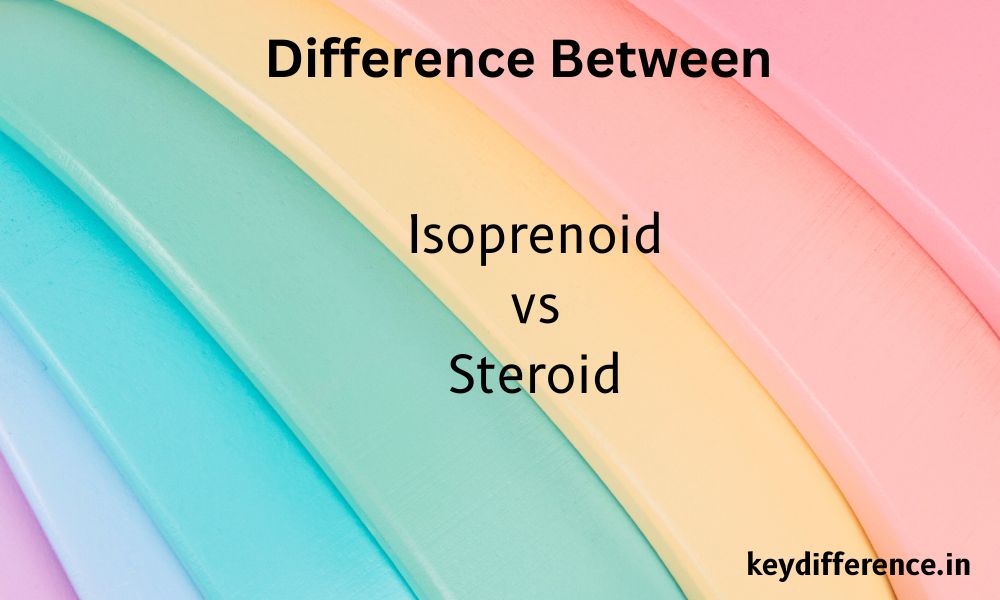Introduction of Carbamates and Organophosphates
Carbamates are chemical compounds with carbamate functional groups. They are Widely used as pesticides, Insecticides, Herbicides and fungicides. Organophosphates are a class of chemical compounds containing phosphorus as their central element and used as insecticides, herbicides, and nerve agents.
Definition of Carbamates
Carbamates are chemical compounds with carbamate functional groups – consisting of carbonyl carbonyl groups attached to an amino group (-NH2). Derived from Carbamic acid, they can be used as Pesticides, insecticides, Herbicides, and fungicides; depending on their specific Chemical Structures they can exist as solids, liquids or gases.
Carbamates are one of the primary pesticides used to control insects and pests. Carbamates work by inhibiting cholinesterase activity – an enzyme essential for nerve impulse transmission between insects. By disrupting this enzyme’s activity, carbamates block nerve impulse transmission leading to paralysis and ultimately death for target pests.
Carbamates are widely recognized for their broad-spectrum activity, meaning they can target an array of pests such as insects, mites, nematodes and certain plant diseases. Due to this wide-spectrum activity and effectiveness, carbamates have long been utilized in agriculture and horticultural practices; however, recently their usage has become more restricted as health and environmental concerns emerge about potential adverse side effects.

Definition of Organophosphates
Organophosphates are chemical Compounds with Phosphorus at their core that have wide Application in insecticides, herbicides and nerve agents. Organophosphates can be Produced using phosphoric acid-derived products or Derivatives and have proven their Insecticidal qualities through extensive use in bug sprays.
Organophosphate pesticides are widely used to manage insects, mites and ticks, among others. Organophosphates work by Inhibiting the activity of an enzyme known as Acetylcholinesterase which plays an integral part in proper Nervous system Functioning in pests as well as humans and other animals – blocking this enzyme causes nerve Impulse Transmission to break down leading to Paralysis and Eventually death for target pests.
Organophosphates are known for their wide-reaching action, making them suitable for targeting an array of pests and insects. Their potency makes them popular with farmers as well as pest control services; additionally they’ve even been employed as nerve agents during chemical warfare operations due to their highly toxic nature.
Note that while organophosphates can be effective pesticides, they also present significant health and environmental risks. Due to their toxic nature, there have been Serious concerns regarding their Potential effects on human Health as well as non-target Organisms; as a result, the use of some Organophosphate compounds has been Restricted or banned entirely in certain regions while Alternative approaches for pest Control are being explored to lessen Reliance on chemical Pesticides.

Comparison Table of Carbamates and Organophosphates
Below is a comparison table highlighting key differences between carbamates and organophosphates:
| Aspect | Carbamates | Organophosphates |
|---|---|---|
| Chemical Structure | Contains carbamate functional group (-NH2COO) | Contains phosphorus as a central element |
| Mode of Action | Inhibits cholinesterase activity | Inhibits cholinesterase activity |
| Target Pests | Broad spectrum activity against pests | Broad spectrum activity against pests |
| Persistence | Varies based on specific compound | Generally more persistent in the environment |
| Environmental Impact | Moderate to low environmental persistence | Can persist in the environment and have ecological impact |
| Health Risks | Moderate toxicity to humans and animals | High toxicity to humans and animals |
| Regulatory Restrictions | Subject to regulations and restrictions | Subject to strict regulations and restrictions |
| Uses | Pesticides, insecticides, herbicides, fungicides | Pesticides, insecticides, herbicides, nerve agents |
| Alternatives | Development of safer alternatives ongoing | Research and development of safer alternatives ongoing |
Please note that this table provides a general overview of the differences between carbamates and organophosphates. Specific compounds within each class may vary in terms of their properties, toxicity levels, and regulatory status.
Importance of understanding the difference between Carbamates and Organophosphates
Understanding the difference between carbamates and organophosphates is critical for multiple reasons:
Safety: Differentiation between carbamates and organophosphate pesticides is vital in order to take appropriate safety measures. Each class has distinct chemical structures and modes of action that impact their toxicity as well as any associated health risks; knowing these differences allows for safe handling, storage, application and disposal practices that minimize exposure risks for humans, animals and the environment.
Environmental Impact: Carbamates and organophosphates can have differing degrees of persistence in the environment, making assessing their potential effects easier. By understanding their specific characteristics, it becomes simpler to asses their impact on ecosystems; some compounds may even have shorter environmental half lives thereby decreasing risk accumulation or long-term effects on non-target organisms – information which allows informed decisions regarding use as well as possible alternatives with lesser environmental impacts.
Health Concerns: Acknowledging the risks associated with carbamates and organophosphates is of utmost importance to medical professionals, emergency responders, and individuals exposed to these pesticides. Each class may display different symptoms of poisoning that require specific treatments protocols; thus creating timely and effective medical responses in cases of accidental exposure or poisoning.
Considerations in Regards to Regulators and Environmental Bodies: Governments and regulatory bodies have put into effect restrictions and guidelines for the use of carbamates and organophosphates that aim to protect human health, the environment and non-target organisms. By understanding their differences between each class of pesticide, individuals and organizations can ensure compliance with regulatory requirements for responsible use, leading to sustainable pesticide usage practices.
Decision-Making and Alternatives: Knowing the differences between carbamates and organophosphates allows for informed decision-making when choosing pest control methods, with increased knowledge enabling better evaluation of both benefits and risks for each class of compounds. In addition, increasing awareness of safer, more eco-friendly methods of pest control could reduce reliance on toxic chemicals altogether.
Understanding the differences between carbamates and organophosphates allows individuals and organizations to make informed choices, promote safety, protect the environment and explore options for effective yet eco-friendly pest control methods.
How organophosphates affect the nervous system
Organophosphates (OPs) are an Umbrella term for chemical Compounds used as insecticides, Herbicides and nerve agents. Their toxic effects come from Inhibiting activity of an enzyme known as Acetylcholinesterase (AChE).
Here’s an Overview of how Organophosphates impact Nervous systems:
Neurotransmitter Signaling: For proper functioning of the nervous system to take place, chemical messengers known as neurotransmitters must pass signals between nerve cells (neurons). One such neurotransmitter is Acetylcholine (ACh), which plays a pivotal role in transmitting messages across synapses.
Organophosphate Inhibition of Acetylcholinesterase (AChE): Organophosphates can Irreversibly block AChE activity – the enzyme responsible for breaking down Acetylcholine at synapses and helping Regulate signal duration and Intensity via rapid degradation post Release of ACh.
Organophosphates thus act to permanently interfere with this important regulatory function by impairing AChE’s function of breaking down Acetylcholine signals after release from nerve endings by rapidly degrading it post release; this helps to help control signal duration and intensity by rapidly degrading it post release thereby aiding signal length and intensity regulation through rapid degradation.
Post release by AChE quickly degradation post release to regulate signal duration/intensity by degrading ACh quickly after its release into neurons/neurons/neuroids can inhibit this crucial regulator by rapid degradation upon its release reducing signal intensity by rapidly degrading its subsequent release into synapses/neu neurons/neurons/acetylcholine release at synapses/synapses/synapse.
AChE is vital for controlling signal duration/intensity by rapidly breaking down Acetylcholine signaling. AChE normally helps regulate duration/intensity by quickly breaking down released Acetylcholine release by rapidly breaking it down after its release regulating duration/intensity rapidly degrading Acety Choline signalling; by rapidly breaking down.
Accumulation of Acetylcholine: When AChE activity is inhibited, Acetylcholine accumulates at synapses and Continues to bind to Receptors on post-synaptic neurons for Extended periods, leading to excessive Stimulation and Overactivation of cholinergic Pathways.
Cholinergic Overstimulation: Excessive stimulation of cholinergic pathways within the nervous system results in excessive and prolonged transmission of nerve signals, leading to physiological and neurological symptoms that include:
Muscular Effects: Increased Acetylcholine activity can cause muscle twitching, tremors, and eventually paralysis in muscles associated with respiration – potentially leading to respiratory failure in extreme cases.
Organophosphates have the ability to adversely impact the central nervous system, leading to symptoms like headache, dizziness, anxiety, confusion seizures and even coma.
Peripheral Nervous System Effects: Peripheral nervous system issues may also have adverse impacts, leading to symptoms like excessive salivation, sweating and tear production; tear production during sleep; as well as digestive disturbances.
Cardiovascular Effects: Organophosphates can alter heart rate and blood Pressure as a result of their Interaction with the Autonomic nervous system.
Delayed Neurotoxicity of Certain Organophosphates: As noted above, certain organophosphates also pose the potential of delayed neurotoxicity, often days or weeks post exposure and manifested through nerve degeneration and associated symptoms such as weakness, ataxia and paralysis.
Organophosphates have varying degrees of toxicity and effects depending on their compound, dose, duration and exposure time as well as individual susceptibility. Due to this Potential for harm, Rigorous safety regulations exist for Handling, application and storage of Organophosphates to reduce risks to human health and the Environment.
Enzyme inhibition and acetylcholinesterase
Acytylcholinesterase (AChE) plays an essential part in understanding organophosphates’ mechanisms of action and effects on nervous systems.
Here is an explanation of enzyme inhibition and AChE:
Enzyme Inhibition: Enzymes are proteins which catalyze specific biochemical reactions within living organisms. Enzymes play an integral part in many physiological processes, including neurotransmitter regulation like Acetylcholine (ACh). Enzyme inhibitors are compounds which interfere with normal functioning of enzymes by disrupting their activity and altering biological processes.
Acetylcholinesterase (AChE):
Acetylcholinesterase is an enzyme present in the nervous system and, specifically, at cholinergic synapses where it regulates neurotransmitter acetylcholine. AChE plays an integral part in its regulation by rapidly hydrolyzing and degrading it within seconds after release into synapses, stopping signaling activity as soon as it arrives and avoiding excessive stimulation.
Organophosphate Inhibition of Acetylcholinesterase: Organophosphates exert their toxic effects by Irreversibly binding to the active site of Acetylcholinesterase, inhibiting it from Performing its function of degrading Acetylcholine into usable forms and leading to its Accumulation within synapses.
Phosphorylation and Inactivation:
When an Organophosphate binds to the active site of AChE, a Chemical process known as Phosphorylation ensues forming an enzyme-inhibitor complex and Rendering AChE incapable of fulfilling its catalytic role to degrade Acetylcholine effectively. This results in its Inactivation.
Prolonged Acetylcholine Signaling: Acetylcholine remains in synapses for longer, overstimulating postsynaptic receptors and leading to extended and intensified nerve signaling. AChE inhibition extends this phenomenon further.
Reversing and Regenerating:
The process of undoing AChE inhibition and restoring its activity is slow, taking several hours or days depending on the organophosphate compound used and personal factors. Nerve signaling remains disrupted during this time, leading to various neurological and physiological side effects associated with organophosphate toxicity.
Note that organophosphates’ ability to irreversibly inhibit AChE is one of the key indicators of their toxicity, necessitating prompt medical intervention and supportive treatments in order to mitigate any potential harm from increased acetylcholine signaling and resultant neurological symptoms.
Chronic effects and long-term exposure
Chronic effects and long-term exposure to organophosphates may have serious health repercussions. Here are some Potential long-term Consequences associated with Prolonged Organophosphate exposure:
Long-Term Effects of Organophosphate Exposure:
Exposure to Organophosphates has been linked with Neurological disorders and cognitive Impairments. Studies have identified associations between chronic organophosphate exposure and increased risks for neurodevelopmental disorders in children (ADHD, reduced cognitive function, behavioral abnormalities).
Adults’ long-term exposure has been associated with increased risks for neurodegenerative diseases like Parkinson’s and Alzheimer’s diseases.
Respiratory Issues:
Extended exposure to organophosphates may lead to respiratory issues. Breathing these chemicals or being exposed through skin contact can lead to irritation, bronchoconstriction and chronic bronchitis – inhalation may even increase asthmatic attacks and chronic obstructive pulmonary disease (COPD) cases among workers exposed.
Reproductive and Developmental Effects:
Organophosphates have the ability to interfere with normal reproductive functioning and fertility. Exposure to organophosphates over a prolonged period has been linked with reduced sperm quality, increased infertility risk and effects on reproductive hormone levels in both males and females, along with potential preterm birth risks, low birth weight babies and developmental anomalies in offspring exposed while pregnant.
Carcinogenic Potential: Some studies indicate a Possible relationship between long-term Exposure to certain Organophosphates and an Increased risk of non-Hodgkin Lymphoma and leukemia, among other cancer types; further Investigation must take place before Conclusively establishing this causal link between chronic Organophosphate exposure and cancer Development.
Endocrine Disruption:
Organophosphates have the potential to alter hormone production and signaling. Long-term exposure could result in hormonal imbalances affecting various bodily processes including growth, metabolism, reproduction and immune responses.
Environmental Effects: Organophosphate use for agriculture and pest control can have harmful environmental consequences. Organophosphate compounds may persist in soil and water systems, potentially polluting groundwater supplies as well as aquatic ecosystems, with long-term ecological ramifications including harm to non-target organisms like beneficial insects, birds and aquatic life.
Noting the long-term health effects associated with organophosphates is of vital importance; their severity varies based on factors like their specific compound, dosage, duration of exposure and individual susceptibility.
To protect long-term exposure to organophosphates properly and minimize potential risks involved with long-term exposure, appropriate safety measures, regulations and protective equipment must be utilized during their handling, application and disposal. Regular Monitoring, risk analysis and Adhering to safety guidelines is Imperative to reduce Potential long-term side effects Associated with these compounds.
Factors influencing organophosphate toxicity
Organophosphates (OPs) toxicity can be determined by multiple factors that impact how severely their effects impact human health and the environment.
Here are a few key influences on organophosphate toxicity:
Chemical Structure: The specific chemical structure of organophosphate compounds plays a significant role in their toxicology. They differ in terms of potency, persistence and their binding capabilities with acetylcholinesterase enzyme (AChE). All these characteristics influence toxicological properties.
Dosage and Concentration: Dose and concentration of organophosphates played an integral part in determining their toxicities to individuals or organisms exposed. In general, higher doses or concentrations result in more severe side effects.
Route of Exposure: The route through which OPs enter the body or environment has an enormous effect on their toxicity. Common forms of exposure include inhalation, ingestion and dermal contact – inhaling aerosolized OPs can quickly absorb through breathing passages while dermal contact can result in absorption through skin contact; eating or drinking contaminated food/water can also increase exposure levels.
Duration of Exposure: The length and frequency of organophosphate exposure can significantly exacerbate its toxic effects. Acute exposure refers to short-term, high dose exposure that causes immediate, severe symptoms; chronic exposure over time often at lower doses can have cumulative and lasting health repercussions.
Individual Sensitivity: Individuals vary greatly in their susceptibility or sensitivity to organophosphate toxicity, depending on factors like age, health conditions, genetic variations in metabolic enzymes and previous exposure history. All these elements could potentially impact how someone responds to organophosphates (OPs).
Metabolism and Detoxification: Metabolic processes within the body can play an integral role in detoxifying organophosphates from our systems, with enzymes involved in metabolism such as cytochrome P450 enzymes helping reduce organophosphate toxicity. Genetic variations could impact one’s ability to metabolize and detoxify these compounds efficiently, potentially increasing their susceptibility to toxicities.
Interactions With Other Chemicals: Exposure to other chemicals, such as pesticides or medications, may interact with organophosphates and alter their toxicity. Synergistic effects may result from combined exposure of multiple chemicals; their combined toxicity could exceed that of their individual effects.
Environment Factors: Environmental conditions have an immense effect on organophosphates’ fate and behavior, including their persistence, degradation rates and potential for environmental contamination. Furthermore, Temperature, pH, humidity and Sunlight all play an influential role – as do factors like Temperature, pH, humidity and Sunlight which all have the capacity to change their Exposure levels and toxicity for organisms in the Environment.
Understanding these Factors is critical in order to assess and Mitigate organophosphate Exposure risks, and develop safety Regulations, protective measures, and Mitigation strategies to mitigate their Potential negative effects on both Humans and the Environment.
Regulations and restrictions on carbamate use
Regulations and restrictions surrounding carbamates – a class of chemical compounds widely used as pesticides and insecticides – differ between countries and regulatory bodies, but here are some general aspects related to their use:
Government Regulations: Government agencies such as the Environmental Protection Agency (EPA) in the US and European Chemicals Agency (ECHA) in EU regulate registration, sale and use of carbamate pesticides. They assess potential risks related to carbamates as well as set guidelines to ensure safe use.
Risk Evaluations: Regulatory agencies undertake comprehensive risk evaluations to assess the hazards and risks posed by carbamates. These evaluations take into account aspects such as their toxicity, exposure levels, environmental fate, potential harm to humans as well as non-target organisms and ecosystems and potential harm prevention measures.
Maximum Residue Limits (MRLs): MRLs represent the maximum allowable concentrations of pesticide residues in food and agricultural products. Regulators set these MRLs for carbamates so as not to pose unacceptable health risks to people eating them; these limits are set using extensive studies and regularly reviewed and updated.
Restricted Use and Application: Certain carbamates may have restrictions on their use, application methods or specific target pests due to their toxicity, potential environmental harm or specific needs associated with certain crops or geographic regions. Restricted usage may require special training, certification or permits prior to application.
Buffer Zones and Application Practices: In order to minimize the risks associated with carbamate use, regulatory authorities can create buffer zones around vulnerable areas like schools, residential communities, or water bodies in order to limit off-target drift or contamination of these sensitive spaces. Furthermore, specific application practices relating to timing, dosage and application equipment could also be mandated to ensure effective yet safe usage.
Periodic Reassessment: Regulatory agencies regularly assess the safety and efficacy of carbamates. New scientific information, data on environmental impacts, health impacts and advancements in testing methodologies are considered during these reassessments; regulatory measures (such as restrictions or bans ) may then be adjusted or altered based on what has been discovered during this process.
Labeling and Safety Guidelines: Carbamate products must include clear and comprehensive labels with instructions for safe handling, storage, application, disposal as well as personal protective equipment (PPE) recommendations and precautionary statements to reduce exposure risks for applicators and those using carbamates.
Compliance with regulations regarding carbamates use is of great significance for agricultural workers and pesticide applicators, in order to safeguard human health, minimize environmental impacts, and maintain sustainable agricultural practices.
Research and development of organophosphate alternatives
Given the potential health risks associated with organophosphates (OPs), there has been increased research and development efforts directed toward finding organophosphate alternatives for pest control purposes.
Here are a few areas of investigation where alternative solutions have been considered:
Biopesticides: Derived from natural sources such as plants, microbes or minerals, biopesticides provide an environmentally-friendly method for pest management. Research efforts are currently being done in order to develop biopesticides which effectively target pests while having minimal adverse impacts on non-target organisms and the environment.
IPM (Integrated Pest Management): IPM is an integrative pest management approach that employs multiple strategies to limit chemical pesticide usage. IPM utilizes monitoring pests, cultural practices, biological controls (natural enemies) and targeted pesticide applications only when necessary – research efforts focus on refining IPM strategies and creating decision support tools to optimize management practices.
Insect Growth Regulators (IGRs): IGRs are compounds used to alter the normal development and growth of insects at certain life stages, potentially less harmful to non-target organisms than traditional insecticides. Research continues on improving their efficacy and safety and expanding their use across a range of pest control scenarios.
Semiochemicals and Behavior Modification: Semiochemicals are chemical signals produced by organisms to communicate. Researchers are exploring their use as pheromones or attractants to modify pest behavior and disrupt mating, feeding, or oviposition patterns – thus decreasing chemical insecticide usage while mitigating environmental impact.
Genetic Engineering: Genetic engineering offers great promise for creating pest-resistant crop varieties, reducing chemical insecticide usage. Researchers are investigating genetically modified crops with built-in resistance against insects by either adding genes conferring resistance or improving natural defense mechanisms within plants.
Nanotechnology: Nanotech-based approaches are being researched as potential alternatives to traditional pesticides. Nanoparticles may be created specifically targeting specific pests or designed to deliver bioactive compounds or disrupt insect physiology; research in this area seeks to develop effective yet environmentally friendly nanopesticides with improved targeting capabilities and reduced off-target effects.
Improved Formulations and Delivery Systems: Researchers are creating advanced formulations and delivery systems for pesticides to increase efficacy while simultaneously decreasing active ingredient usage. This includes using encapsulation technologies, nanoemulsions and controlled-release formulations that enable targeted delivery with reduced off-target effects while increasing stability of active compounds.
Note that the development and adoption of organophosphate alternatives require extensive testing, regulatory approval and consideration of potential risks associated with new technologies. The objective is to find sustainable yet effective pest management solutions while simultaneously protecting human health while minimising environmental impacts.
Conclusion
Understanding the Differences between Carbamates and Organophosphates is crucial to accurately Evaluating their impacts on human health and the Environment. While both types of Chemicals are widely used as Pesticides, their Chemical Composition, mode of action, Toxicity profiles and Environmental impacts vary Considerably.
Carbamates mainly work by Inhibiting cholinesterase enzymes while Organophosphates irreversibly block Acetylcholinesterase (AChE), leading to prolonged and Excessive signaling by acetylcholine signaling Pathways resulting in prolonged and excessive Signaling by AChE; both types of Chemicals have implications on health and Environment alike.







